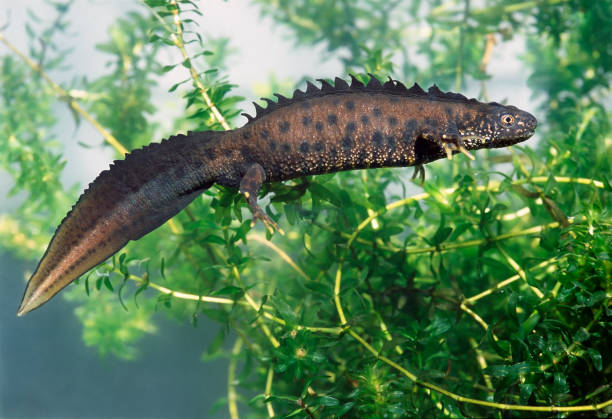The great crested newt (Triturus cristatus) is a species of newt found in Europe, particularly in the United Kingdom and parts of continental Europe. Here are some key characteristics and information about the great crested newt:
- Appearance:
- Adult great crested newts are relatively large compared to other newt species, reaching lengths of up to 15 centimeters.
- They have a distinctive warty skin, a dark coloration with spots, and a prominent crest along their back, which is more pronounced in males during the breeding season.
- Males also have a more noticeable and jagged crest, especially during the breeding season.
- Habitat:
- Great crested newts are found in a variety of aquatic habitats, including ponds, lakes, and slow-moving streams.
- They spend much of the year in terrestrial habitats, such as woodlands and grasslands, but migrate to breeding ponds in the spring.
- Reproduction:
- Breeding typically occurs in the spring. Males perform elaborate courtship displays to attract females.
- After mating, females lay individual eggs on aquatic plants. The eggs are wrapped in the leaves of the plants.
- Larvae hatch from the eggs and go through a series of developmental stages before metamorphosing into terrestrial juveniles.
- Conservation Status:
- The great crested newt is protected by law in many European countries due to declines in its population.
- Habitat loss, pollution, and the draining of ponds are some of the factors contributing to their decline.
- Legal Protection:
- In the United Kingdom, for example, great crested newts are protected by law, and any development that might affect their habitats requires a survey to assess the potential impact on the population.
- Conservation Measures:
- Conservation efforts often involve creating and maintaining suitable habitats, such as ponds, and ensuring that these habitats are not disturbed during the breeding season.
- Habitat restoration projects, education, and public awareness campaigns also play a role in great crested newt conservation.
